It looks like you're using an Ad Blocker.
Please white-list or disable AboveTopSecret.com in your ad-blocking tool.
Thank you.
Some features of ATS will be disabled while you continue to use an ad-blocker.
share:
reply to post by JadeStar
Thanks for the info, so the halo appears to be in the habital zone? Life on earth started early on so life could arrise even if it is only for a billion years or so. Seen as were on ATS i will speculate that its evidence of a class 3 civilisation harnessing and shaping a new living solar system,but i may be wrong.. thanks again.
Thanks for the info, so the halo appears to be in the habital zone? Life on earth started early on so life could arrise even if it is only for a billion years or so. Seen as were on ATS i will speculate that its evidence of a class 3 civilisation harnessing and shaping a new living solar system,but i may be wrong.. thanks again.
MarsIsRed
reply to post by JadeStar
In theory, we should be able to directly image any rocky planet in high resolution - at least in a way. I thought about this years ago, and the idea is pretty sound.
As a planet rotates, you'd need to image it many times - perhaps every 5 degrees of rotation, for many exo-days. The slight variation in brightness allows you to create a 'difference map' between the area that left the field of view, and the area that just emerged. Over many observations, and assuming a true earth analogy, you could easily create a reasonably accurate estimate of the relative distribution between land and sea (and cloud cover).
All of this is correct. The problem is that in order to do that with small rocky close in planets we have to block out the light of the star somehow close in enough to see those planets. Thats a huge challenge with even a large ground based telescope like Keck or Gemini.
The European Extremely Large Telescope (E-ELT) 39m , the US Thirty Meter Telescope (TMT) 30m -may- be able to do it when completed. But realistically a much bigger telescope would have to be constructed like the E-ELT's original 42m design or better yet like the 70m Colossus!!
Gemini blocks out the light of the star but can only see planets far out in the cold regions around a star.
Ideally what we'd like to have would be a large telescope in space with a coronagraph or a very large multitelescope interferometer.
The W-FIRST mission using one of the two Hubble sized telescopes the NRO gave NASA is talking about possibly adding a coronagraph to the plan. If this happens it will get us closer.
A bigger light bucket in space than Hubble or W-FIRST with a coronagraph will get us there though. They're calling it the LUVOIR (Large Ultra Violet Optical and InfraRed) space telescope, which would be built sometime after the James Webb Space Telescope has been operating for 5-10 years.
There's also talk of flying a starshade in front of the James Webb to block out the starlight to see small close in planets. I sure hope this happens!!
edit on 8-1-2014 by JadeStar because: (no reason given)
symptomoftheuniverse
reply to post by JadeStar
Thanks for the info, so the halo appears to be in the habital zone? Life on earth started early on so life could arrise even if it is only for a billion years or so.
The halo is not in the habitable zone. However as someone said, there could be planets within it. And you're right, life on earth came about early on, however early in this case means 3.6 billion years ago. Or roughly 1 billion years after the formation of the solar system. This system is only around 8 million years old. By the time it is 1 billion years old, those planets will be cooked. So just as life is starting to evolve, it will be fried.
Seen as were on ATS i will speculate that its evidence of a class 3 civilisation harnessing and shaping a new living solar system,but i may be wrong.. thanks again.
Nah it's just dust... You might like this video though:
edit on 8-1-2014 by JadeStar because: (no reason given)
Fantastic video thankyou. It seems dust in space is equivalant to rocks on mars when looking for civilisations lol. i enjoyed the video thanks again
JadeStar
symptomoftheuniverse
reply to post by JadeStar
Thanks for the info, so the halo appears to be in the habital zone? Life on earth started early on so life could arrise even if it is only for a billion years or so.
The halo is not in the habitable zone. However as someone said, there could be planets within it. And you're right, life on earth came about early on, however early in this case means 3.6 billion years ago. Or roughly 1 billion years after the formation of the solar system. This system is only around 8 million years old. By the time it is 1 billion years old, those planets will be cooked. So just as life is starting to evolve, it will be fried.
Seen as were on ATS i will speculate that its evidence of a class 3 civilisation harnessing and shaping a new living solar system,but i may be wrong.. thanks again.
Nah it's just dust... You might like this video though:
edit on 8-1-2014 by JadeStar because: (no reason given)
You're welcome. It's been said we're in a time of discovery not unlike that of the era of Copernicus or Galileo.
I don't think that is an exaggeration. It's a pity more people do not recognize it or even know about it. I do my part to bring it to light though
I don't think that is an exaggeration. It's a pity more people do not recognize it or even know about it. I do my part to bring it to light though
It just blows the mind to think that there are billions of worlds out there ,so far away we can barely see them and you see these images and wonder if
life is there,makes me wonder how many civilisations are looking at us in there telescopes.
reply to post by JadeStar
Amazingly I also folowed this closely about all the new findings and soon they come with this new fiber optic imagery that will bring planets much closer into view.
I think they also work with SETI for traces of" correct me if I'm wrong?"plasma that come from advanced controlled civilizations .I think they going via this way to slowly inform us that there are indications extraterrestrial life has been spotted and this will happen soon IMHO..
Well if I looked two post above me then I wouldn't have to explain myself...Here I go to earn my dumb@$$ medal..
Amazingly I also folowed this closely about all the new findings and soon they come with this new fiber optic imagery that will bring planets much closer into view.
I think they also work with SETI for traces of" correct me if I'm wrong?"plasma that come from advanced controlled civilizations .I think they going via this way to slowly inform us that there are indications extraterrestrial life has been spotted and this will happen soon IMHO..
Well if I looked two post above me then I wouldn't have to explain myself...Here I go to earn my dumb@$$ medal..
edit on
0b33America/ChicagoThu, 09 Jan 2014 04:11:33 -0600vAmerica/ChicagoThu, 09 Jan 2014 04:11:33 -06001 by 0bserver1 because: (no reason given)
I'm glad to be living in the age that I am in seeing all these advancements, but it makes me wonder just how farther we can go in just a few years
time. With the way technology is moving I can't wait to see what new things we will be able to see, what we have so far is rather amazing.
reply to post by MarsIsRed
That's an amazing photograph. Sends a chill down the spine. However, as to the above quote (and in the vein of wishful thinking); wouldn't it be mind-numbing if they came back with a correction:
"The observable light formerly perceived to have been produced by the planet's formation has now been - after further and much deeper analysis - to be something totally different. It appears to be defined within the perimeter of the planet's circumference; in fact, though incredibly bright, it is confined to specific, and non-regular geographical areas. It is our pleasure to announce that the light seen is in fact artificial; what we are seeing is the night-side glow of colossal towns and cities."
It can only be a matter of time before we read something like the above piece of fantasy. Personally, I can't wait.
These near-infrared images (1.5-1.8 microns) show the planet glowing in infrared light from the heat released in its formation.
That's an amazing photograph. Sends a chill down the spine. However, as to the above quote (and in the vein of wishful thinking); wouldn't it be mind-numbing if they came back with a correction:
"The observable light formerly perceived to have been produced by the planet's formation has now been - after further and much deeper analysis - to be something totally different. It appears to be defined within the perimeter of the planet's circumference; in fact, though incredibly bright, it is confined to specific, and non-regular geographical areas. It is our pleasure to announce that the light seen is in fact artificial; what we are seeing is the night-side glow of colossal towns and cities."
It can only be a matter of time before we read something like the above piece of fantasy. Personally, I can't wait.
amurphy245
It just blows the mind to think that there are billions of worlds out there ,so far away we can barely see them and you see these images and wonder if life is there,makes me wonder how many civilisations are looking at us in there telescopes.
We're probably on quite a few lists of interesting planets in this part of the galaxy. The signature of life in our atmosphere has been visible since around 3.4 billion years ago when the atmosphere got a lot of oxygen as a result of photosynthesis.
And if they're within about 1,000 light years they very well could have pictures like this with not much more than our current technology.

As we're planning to have:
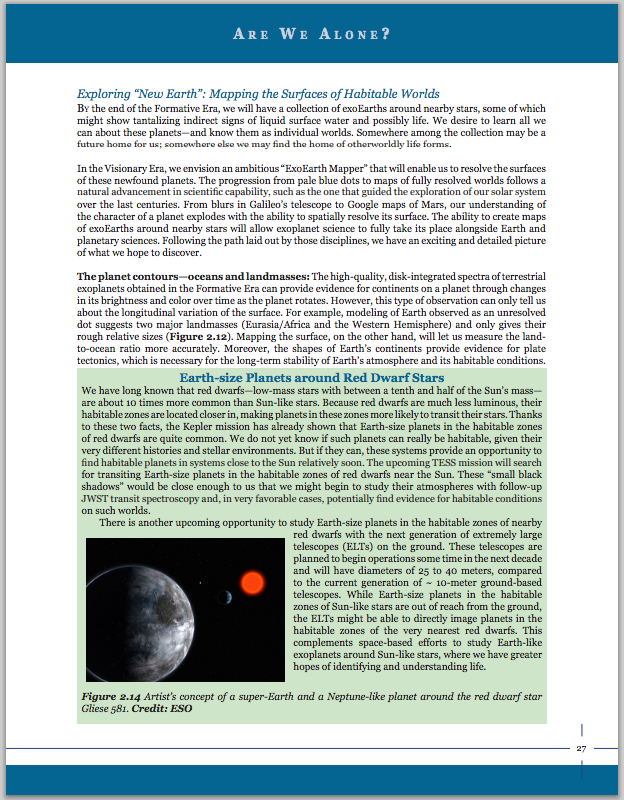
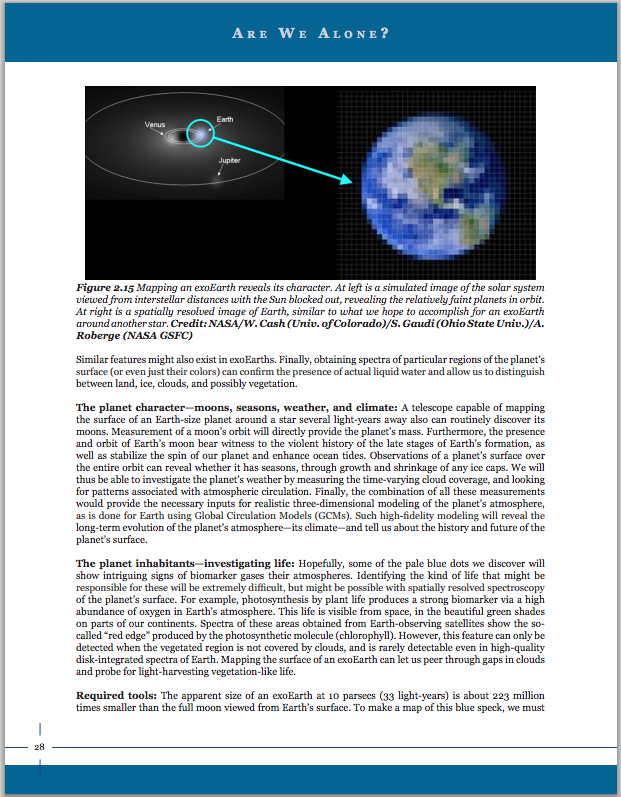
If they have massive telescopes in space then you can extend the distance out to maybe as much as 50,000 light years or so, or roughly halfway across the Milky Way galaxy.
edit on 9-1-2014 by JadeStar because: (no reason given)
edit on 9-1-2014 by JadeStar because: (no reason
given)
Beamish
reply to post by MarsIsRed
These near-infrared images (1.5-1.8 microns) show the planet glowing in infrared light from the heat released in its formation.
That's an amazing photograph. Sends a chill down the spine. However, as to the above quote (and in the vein of wishful thinking); wouldn't it be mind-numbing if they came back with a correction:
"The observable light formerly perceived to have been produced by the planet's formation has now been - after further and much deeper analysis - to be something totally different. It appears to be defined within the perimeter of the planet's circumference; in fact, though incredibly bright, it is confined to specific, and non-regular geographical areas. It is our pleasure to announce that the light seen is in fact artificial; what we are seeing is the night-side glow of colossal towns and cities."
It can only be a matter of time before we read something like the above piece of fantasy. Personally, I can't wait.
I'm wondering if you read this thread: ATS: Astronomers Detect First 'Clear Signs of Civilization' Beyond Earth - How will you react?
Because that was the scenario I laid out.
That's just amazing.. It's pretty cool to be alive on the cusp of the ages, a century from now our species may have so much more knowledge about
these star systems and pictures of greater detail.. Possibly even knowledge of life existing on them! Stuff like this keeps me inspired..
..That's if we don't destroy our selves and the planet in next few years.
..That's if we don't destroy our selves and the planet in next few years.
it seams to Amaze me that observatory telescopes back in the 1950s were showing images of Stars aka Suns in great detail in the Outer Edge of our
Galaxy the milky way. when it was looking at another Galaxy..
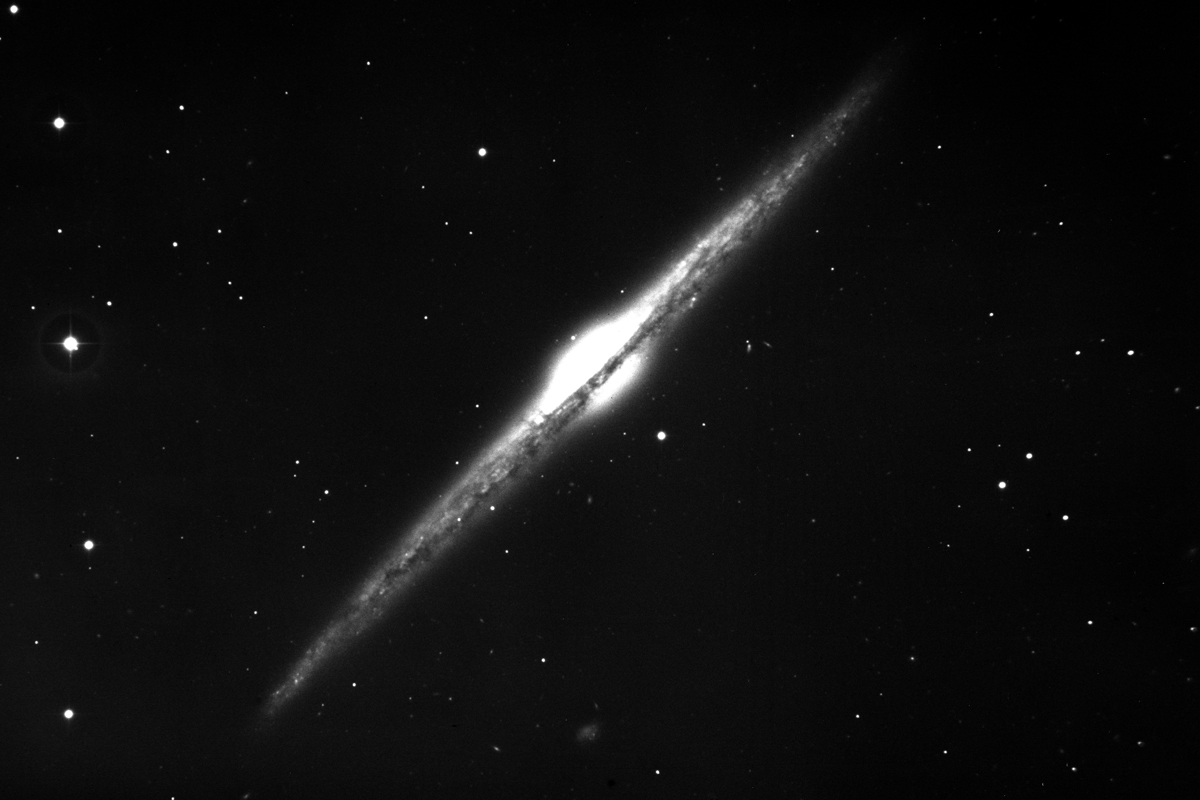
These stars/suns in the green boxes are in Our Galaxy caught in view from looking at another Galaxy

is this a Star with a Planet see the Bulge back in the 1950s ! if it is what can the Hubble Scope actually Show ?

Some Pics of the 1950s of star up and close
Telescopes I've Used - Palomar
Palomar Observatory, California
www.astr.ua.edu...
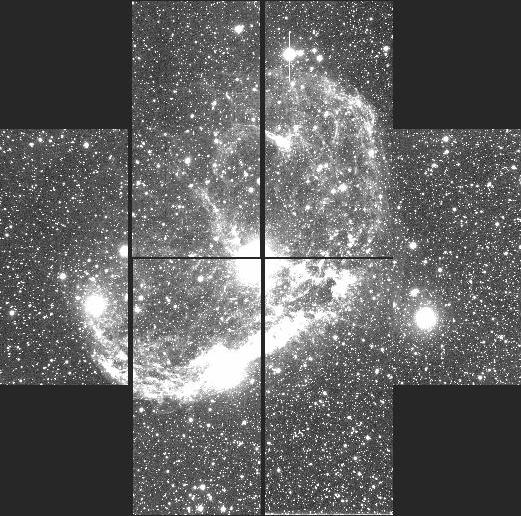
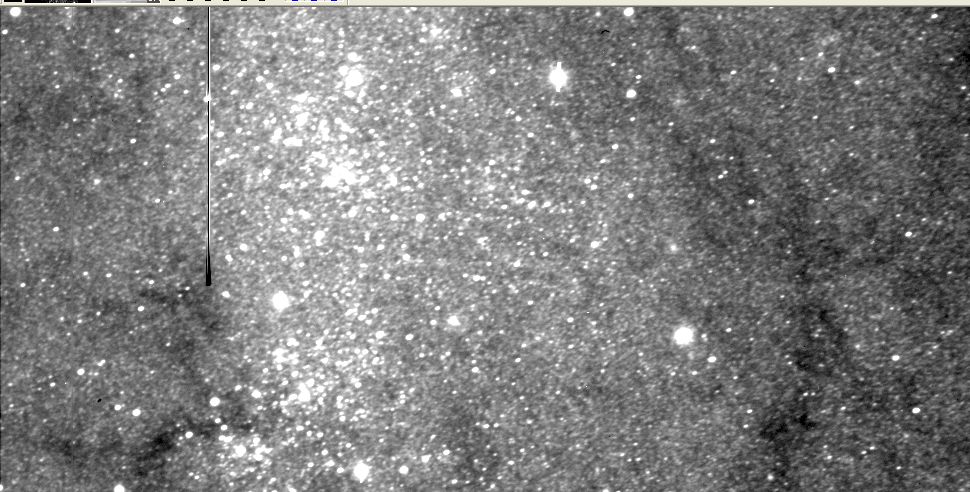
WHAT!! ? Super Giant Stars from another Galaxy !!
Come on People if we can see Stars clear as Almost>> Crystal from the 1950s from a palomar telescope
then this !!


These stars/suns in the green boxes are in Our Galaxy caught in view from looking at another Galaxy

is this a Star with a Planet see the Bulge back in the 1950s ! if it is what can the Hubble Scope actually Show ?

Some Pics of the 1950s of star up and close
Telescopes I've Used - Palomar
Palomar Observatory, California
www.astr.ua.edu...
I had the rare chance to use the Hale telescope in a set of observations supporting a GALEX program, since coinvestigator Scott Chapman was at Caltech (at which point the Palomar page was promoted from the "tourist" section of this site). This became a more interesting experience than I anticipated, since a failure in a supporting rail meant that we couldn't point the dome toward any of our targets for half of the observing run. Until a specialist welder from Seattle finished his repairs, we could look only at things which were visible with the dome stuck pointing toward the northeast. My instructions from the site director for the first two nights were "have fun and try to do something interesting". Wherever Hubble is buried, there were vibrations from underground... Here are some art shots, snippets from the 24-arcminute field covered by the 6-CCD mosaic camera. The Crescent Nebula, NGC 6888, is a windblown bubble produced by the fierce wind from its central Wolf-Rayet star. It spans most of the mosaic field (shown here in a single exposure before processing to fill in the gaps with other exposures).

Next, we zoom in to the brightest star-forming association in the Andromeda Galaxy, NGC 206. Myriads of giant and supergiant stars are resolved on this single CCD.

WHAT!! ? Super Giant Stars from another Galaxy !!
Come on People if we can see Stars clear as Almost>> Crystal from the 1950s from a palomar telescope
then this !!

edit on 9-1-2014 by Wolfenz because: (no reason given)
reply to post by Wolfenz
Stars can be seen clearly because they are very bright. Exoplanets or brown dwarfs are very dim, and require enhanced techniques that don't always produce nice and clear images.
You can't see an exoplanet unless you cover the star, otherwise the star's bright light completely drowns the planet out.
Stars can be seen clearly because they are very bright. Exoplanets or brown dwarfs are very dim, and require enhanced techniques that don't always produce nice and clear images.
You can't see an exoplanet unless you cover the star, otherwise the star's bright light completely drowns the planet out.
i think the image of gliese above your last post contradicts you somewhat.
wildespace
reply to post by Wolfenz
Stars can be seen clearly because they are very bright. Exoplanets or brown dwarfs are very dim, and require enhanced techniques that don't always produce nice and clear images.
You can't see an exoplanet unless you cover the star, otherwise the star's bright light completely drowns the planet out.
reply to post by JadeStar
I haven't read that thread, and I'm sorry if I duplicated your premise!
It just seems like the obvious way to induct us all on this little blue rock into the concept of life "elsewhere", to see photographic evidence of a civilization that is countless years away from us.
The photo in the OP still sends shivers down the spine...
I haven't read that thread, and I'm sorry if I duplicated your premise!
It just seems like the obvious way to induct us all on this little blue rock into the concept of life "elsewhere", to see photographic evidence of a civilization that is countless years away from us.
The photo in the OP still sends shivers down the spine...
symptomoftheuniverse
i think the image of gliese above your last post contradicts you somewhat.
wildespace
reply to post by Wolfenz
Stars can be seen clearly because they are very bright. Exoplanets or brown dwarfs are very dim, and require enhanced techniques that don't always produce nice and clear images.
You can't see an exoplanet unless you cover the star, otherwise the star's bright light completely drowns the planet out.
Actually it doesn't.
Gliese 229 B is a Brown Dwarf. A class of star, sort of.
This is why it gets a capital "B" as a binary star would instead of a small "b" as a planet would.
Brown dwarfs, while, smaller and cooler than most stars are still huge compared to planets in terms of mass.
Gliese 229 B is anywhere from 20 to 50 times more massive than Jupiter and has a temperature of 950K (676.85C, 1250F).
That is hot enough to glow brightly in the near-infrared where that picture was taken (which is why you see it as a false color image btw).
Gliese 229 B also orbits a small low mass and dim star called a red dwarf which means the glare of the star it orbits is minimal.
Gliese 229 B also orbits at 41 astronomical units (AU) out. That's just a little further out than Pluto orbits the Sun, which means that there is a great deal of separation between Gliese 229 A and B so that B could be resolved easily.
This is far different than resolving closer in orbiting, lower mass objects like planets around a more massive Sunlike (F,G,K) star.
edit on
10-1-2014 by JadeStar because: (no reason given)
Beamish
reply to post by JadeStar
I haven't read that thread, and I'm sorry if I duplicated your premise!
Great minds think alike
You might want to read it, a lot of people liked it. A few people early on thought it was real which is why I had to add the disclaimer atop the first post.
It just seems like the obvious way to induct us all on this little blue rock into the concept of life "elsewhere", to see photographic evidence of a civilization that is countless years away from us.
Well, it would also just be the logical next step in a progression of growing images and details of extrasolar planets. It's probably bound to happen within the next 30 or 40 years.
If the Colossus 70m telescope gets built, maybe much sooner than that. Anyone got a spare billion USD? Hello Google?
The photo in the OP still sends shivers down the spine...
Mine too
edit on 10-1-2014 by JadeStar because: (no reason given)
aha a brown dwarf not a planet.
JadeStar
symptomoftheuniverse
i think the image of gliese above your last post contradicts you somewhat.
wildespace
reply to post by Wolfenz
Stars can be seen clearly because they are very bright. Exoplanets or brown dwarfs are very dim, and require enhanced techniques that don't always produce nice and clear images.
You can't see an exoplanet unless you cover the star, otherwise the star's bright light completely drowns the planet out.
Actually it doesn't.
Gliese 229 B is a Brown Dwarf. A class of star, sort of.
This is why it gets a capital "B" as a binary star would instead of a small "b" as a planet would.
Brown dwarfs, while, smaller and cooler than stars are huge compared to planets in terms of mass.
Gliese 229 B is anywhere from 20 to 50 times more massive than Jupiter and has a temperature of 950K (676.85C, 1250F).
That is hot enough to glow brightly in the near-infrared where that picture was taken (which is why you see it as a false color image btw).
Gliese 229 B also orbits a small low mass and dim star called a red dwarf which means the glare of the star it orbits is minimal.
Gliese 229 B also orbits at 41 astronomical units (AU) out. That's just a little further out than Pluto orbits the Sun, which means that there is a great deal of separation between Gliese 229 A and B so that B could be resolved easily.
This is far different than resolving closer in orbiting, lower mass objects like planets around a more massive Sunlike (F,G,K) star.
I love to be corrected thanks for taking the time. Carry on and i will have to go back to school because im envious of your superior knowledge.arrghh
new topics
-
Louisiana Lawmakers Seek to Limit Public Access to Government Records
Political Issues: 2 hours ago -
The Tories may be wiped out after the Election - Serves them Right
Regional Politics: 3 hours ago -
So I saw about 30 UFOs in formation last night.
Aliens and UFOs: 5 hours ago -
Do we live in a simulation similar to The Matrix 1999?
ATS Skunk Works: 6 hours ago -
BREAKING: O’Keefe Media Uncovers who is really running the White House
US Political Madness: 6 hours ago -
Biden--My Uncle Was Eaten By Cannibals
US Political Madness: 7 hours ago -
"We're All Hamas" Heard at Columbia University Protests
Social Issues and Civil Unrest: 7 hours ago -
The good, the Bad and the Ugly!
Diseases and Pandemics: 9 hours ago
top topics
-
BREAKING: O’Keefe Media Uncovers who is really running the White House
US Political Madness: 6 hours ago, 21 flags -
Biden--My Uncle Was Eaten By Cannibals
US Political Madness: 7 hours ago, 18 flags -
African "Newcomers" Tell NYC They Don't Like the Free Food or Shelter They've Been Given
Social Issues and Civil Unrest: 13 hours ago, 12 flags -
Two Serious Crimes Committed by President JOE BIDEN that are Easy to Impeach Him For.
US Political Madness: 15 hours ago, 8 flags -
911 emergency lines are DOWN across multiple states
Breaking Alternative News: 15 hours ago, 7 flags -
"We're All Hamas" Heard at Columbia University Protests
Social Issues and Civil Unrest: 7 hours ago, 7 flags -
Russia Flooding
Fragile Earth: 14 hours ago, 6 flags -
Russian intelligence officer: explosions at defense factories in the USA and Wales may be sabotage
Weaponry: 12 hours ago, 5 flags -
So I saw about 30 UFOs in formation last night.
Aliens and UFOs: 5 hours ago, 4 flags -
Do we live in a simulation similar to The Matrix 1999?
ATS Skunk Works: 6 hours ago, 3 flags
active topics
-
Revolution in advertising: the Russians launched a unique satellite
Science & Technology • 73 • : purplemer -
"We're All Hamas" Heard at Columbia University Protests
Social Issues and Civil Unrest • 81 • : hangedman13 -
Candidate TRUMP Now Has Crazy Judge JUAN MERCHAN After Him - The Stormy Daniels Hush-Money Case.
Political Conspiracies • 353 • : YourFaceAgain -
Do we live in a simulation similar to The Matrix 1999?
ATS Skunk Works • 17 • : purplemer -
Biden--My Uncle Was Eaten By Cannibals
US Political Madness • 36 • : YourFaceAgain -
So I saw about 30 UFOs in formation last night.
Aliens and UFOs • 14 • : Ophiuchus1 -
Sol Et Luna - TIME2024
Short Stories • 9 • : Encia22 -
British TV Presenter Refuses To Use Guest's Preferred Pronouns
Education and Media • 59 • : Consvoli -
Former NYT Reporter Attacks Scientists For Misleading Him Over COVID Lab-Leak Theory
Education and Media • 8 • : Consvoli -
MULTIPLE SKYMASTER MESSAGES GOING OUT
World War Three • 27 • : Zaphod58
